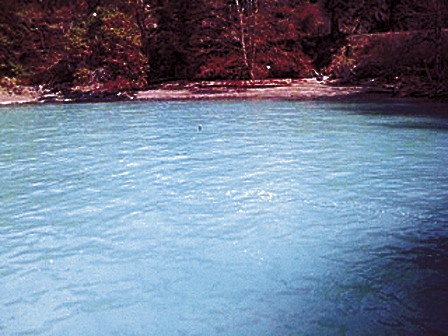It looked like a Caribbean current swept into Fishing Bay last month.
On March 28, onlookers near the Eastsound county dock at Madrona Point noticed vibrantly aquamarine-colored water.
Local research group Kwiaht investigated the “milky water,” speculating it was herring spawn. Director Russel Barsh collected a water sample and gently raked the area for eggs, which the state requires as evidence of any spawning events.
“We were able to collect eggs on kelp … and can confirm that the eggs appear to be herring,” he said. “We will conduct a genetic analysis to be certain of the species, and also to preserve a record of this new ‘stock,’ so if some of the eggs survive to adulthood, we can find them among the next generation of adult herring.”
Barsh said there was once “scores” of herring spawning in bays throughout the islands, but gradually all of them were fished out or developed.
“Mud Bay on Lopez is the only fairly regularly documented herring spawning site in the county nowadays, but some of us have suspected that there are some other very small undocumented spawning events around the islands each year,” Barsh said.
He says the question now is if any of the eggs will survive to hatch and produce juvenile herring.
“Odds are poor, since there was little live vegetation where the spawning occurred, and a lot of the kelp covered with eggs is detrital and will simply float away, possibly to wash up on a beach somewhere else where the eggs will bleach, dry, and die,” Barsh said. “But at least some eggs may stay in Fishing Bay and hatch. My Indian Island Marine Health Observatory team will be looking for tiny herring when we take out our fishing net on April 21 and May 7. If we see any, that will be very good news!”



